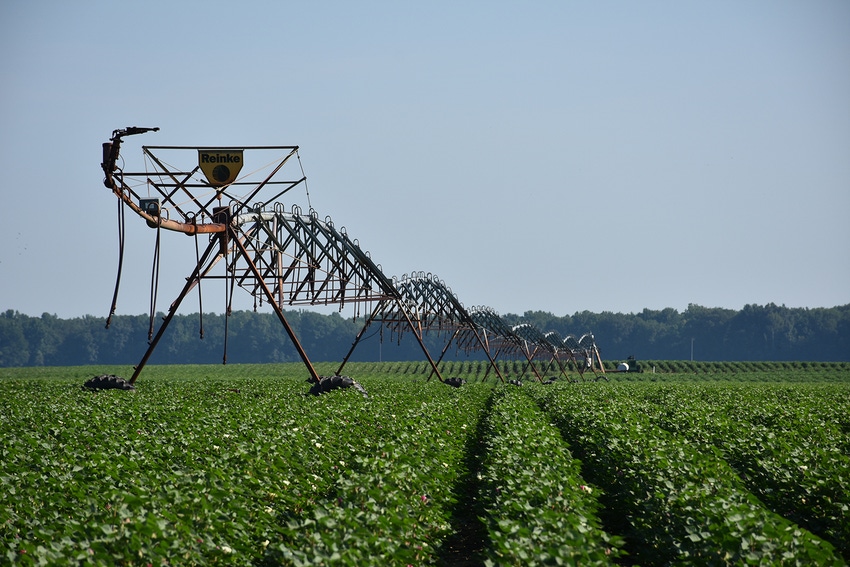
Extension weed specialists from across the Cotton Belt believe new dicamba labels will have little effect on application recommendations for 2021.
They do, however, urge producers and consultants to practice product stewardship to safeguard important tools in herbicide-resistant weed control.
“We have a few more restrictions with the new labels,” said Peter Dotray, Texas A&M AgriLife Extension weed specialist. “But I don’t see these labels causing major changes for the coming season. We need to continue to emphasize the importance of on-target applications and stress the importance of using dicamba as part of a weed management system.”
University of Georgia Extension specialist Stanley Culpepper said weed management recommendations will not change. “Of course, we are making sure all applicators are updated on new federal label restrictions including cutoff dates, standard buffers, buffers in counties with identified endangered species, and variable-rate applications or pH buffering adjuvants.”
Those updates in Georgia are delivered through the “Using Pesticide Wisely” trainings required for both in-crop dicamba and 2,4-D products. The programs will be conducted in March and April by UGA and the Georgia Department of Agriculture.
Arkansas restrictions tougher
“Dicamba recommendations haven’t changed for us,” said University of Arkansas Division of Agriculture weed scientist Jason Norsworthy.
Norsworthy said Arkansas dicamba restrictions exceeded the federal label before the latest change. “The Arkansas State Plant board met in December and voted to continue with the same regulations in place previously.”
Regulations include following the federal label until April 15. From then to May 25, applicators cannot tank mix glyphosate with dicamba because of volatilization. After May 25, no dicamba application is permitted, he said.
Norsworthy said increased emphasis on volatility in the new label makes sense. “This is a much-improved label with much less risk of off-target movement. The old labels mostly disregarded volatility. We see an attempt to address volatility in these new labels. We are headed in the right direction.”
Volatility addressed
“All dicamba formulations will need a volatility reduction adjuvant,” Dotray said. “Applicators need to buffer the spray solution to minimize volatility.”
Norsworthy said tests on low volatility compounds continues. “In 2019, we tested Sentris as a numbered compound in a low volatility trial. We’ve been impressed with what we have seen so far. We get the question a lot, ‘How low does volatility have to be to not cause a problem?’ We have no good answer; number of acres sprayed may be a factor.”
The new labels also extend buffers, which will require more attention to downwind property. “Growers will rely more on soil residual herbicides and timely applications using Liberty on small weeds,” Dotray said. “Abide by the new restrictions and rely on other available tools.”
Culpepper said efforts are underway to improve buffer flexibility to better match the science generated in our state by using state labels, Culpepper said. “It’s too early to know the outcome of what buffers our growers will have to follow specifically. This is a joint effort by the Georgia Department of Agriculture, UGA, and some product manufacturers.”
Norsworthy said buffer zones in Arkansas are already larger — a mile to susceptible crops and organics.
Application timing
Dicamba application timing has not changed per the federal label. “The labels state that applications can be made between one hour after sunrise and two hours before sunset,” Dotray said.
Last year in Texas, applicators could spray from sunrise to sunset because of a state 24-C exemption.
He said the state may file for a 24-C exemption to permit the same start and stop times as last year. “We will know more before applications are made this growing season.”
He said dicamba applications last year “in Texas were pretty successful by adhering to proper windspeed and avoiding tank mixes that compromise the low volatility attributes of the new dicamba formulations.”
Dotray said Texas cotton growers are happy to have dicamba products available to help manage glyphosate-resistant weed populations.
But he, Norsworthy and Culpepper advise caution to protect the products.
Stewardship
“Don’t over rely on dicamba,” Dotray said, “or resistance could quickly develop. Our recommendations are similar to last year; use dicamba as part of a system that includes herbicides applied preplant, at-plant, or in a tank mix.”
He added that new label restrictions will continue to emphasize on-target applications.
“We think more herbicide options in cotton is a good thing, and we can work around new restrictions.”
Culpepper said the Using Pesticide Wisely Program has proven to be a crucial tool in Georgia’s product stewardship effort. He referred to data showing a 78% reduction in drift complaints since the training program was initiated in 2014. “This is our flagship pesticide stewardship program,” he said.
Product stewardship is a serious issue, Norsworthy said. “There is now dicamba-resistant Palmer amaranth in Tennessee. I recently reported glufosinate resistance has been found in Arkansas. Regardless of the product, repeated use in a given field will result in resistance.
“At one time, folks said there was no way glyphosate resistance would occur; today, we can’t find a field without resistance. With any tool, overuse will result in resistance. Dicamba is no different.”
No escapes
Dotray said controlling escaped populations must be a priority to avoid adding weed seed to the soil.
As cotton planting season nears, state Extension and dicamba manufacturers will continue to offer auxin-specific certification trainings to go over new label updates and emphasize product stewardship and on-target applications.
“We have been conducting virtual meetings this year to certify growers to apply specific formulations of dicamba and 2,4-D in their appropriate cotton varieties,” Dotray said.
Restrictions will not be added at the state level, Culpepper said. “My hope is that with sound science generated in Georgia we can successfully submit labels that improve applicator flexibility regarding training requirements, cutoff dates, and buffers.”
About the Author(s)
You May Also Like






